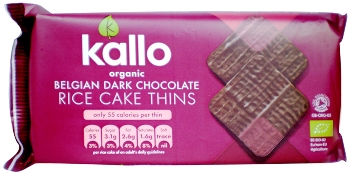The treat image of biscuits is driving the premium sector forward, while rising health concerns have also raised interest in better-for-you products.
Chocolate biscuits have been one of the main beneficiaries of rising interest in the treat image of biscuits and the market has continued to see growth in most countries despite ongoing financial and health concerns.
According to Lu Ann Williams, Research Manager for Innova Market Insights, this is probably attributable to the ongoing demand for everyday treats and the continuing tendency to "trade off" by mainly choosing healthy options but then having an indulgent product as a reward.
Biscuits with some sort of chocolate content accounted for a significant 48 per cent of the global sweet biscuit launches recorded by Innova Market Insights in 2011, although this was down from over 60 per cent five years previously, perhaps reflecting the greater choice of biscuit varieties and flavours now on offer.
Chocolate biscuits do have strong competition, however, not only from other types of biscuits, but also from other sweet snacking lines, such as confectionery, cereal bars and cakes.
The treat image of chocolate and the relatively inexpensive nature of many of the products means that they can have wide appeal both as store cupboard and impulse items, however, and many are also suitable both for in-home and on-the-go consumption. It is these characteristics, combined with high levels of product and promotional activity, that have kept the market performing relatively well during a time of economic difficulty.
While indulgence is keeping the market for chocolate biscuits buoyant, health can still be a factor in purchasing decisions, although not to the same extent as for some other food and drink products.
Companies have been endeavouring to improve the nutritional profile of their standard products in many instances and this may have inhibited growth in the specific healthier or better-for-you biscuits market. Nearly 30 per cent of global biscuit launches in 2011 were positioned on a health platform of some kind, rising to over 40 per cent for savoury biscuits and falling to just over a quarter for sweet biscuits.
By far the most popular health claims were those relating to naturalness and the lack of artificial additives and/or preservatives, reflecting rising levels of interest in clean labelling. Over 30 per cent of launches carrying health claims used this type of positioning, equivalent to 12 per cent of biscuit launches as a whole.
The next most popular positioning was low and light, including low-sugar, low-sodium, low-calorie and low-fat launches.
Low-fat was the most popular individual claim of these, ahead of low-sugar/sugar-free/no-added-sugar. The use of whole grains took third place, followed by gluten-free lines and organic products. All three of these categories have seen launch numbers rise substantially over the past five years, with the biggest increase for gluten-free biscuits, ahead of whole grain products and then organic lines.
The number of products marketed as gluten-free is continuing to rise globally, and biscuits have been fairly central to this growth, reflecting the traditional use of wheat as a basic ingredient, with the consequent opportunities to create gluten-free alternatives.
The strong growth in activity is partly due to improved labelling regulations, but also to rising awareness of gluten intolerance in the diet and the search for more mainstream and appealing gluten-free products. Launches of biscuits marketed on a gluten-free platform accounted for over 4 per cent of total biscuit launches recorded by Innova Market Insights in 2011.




